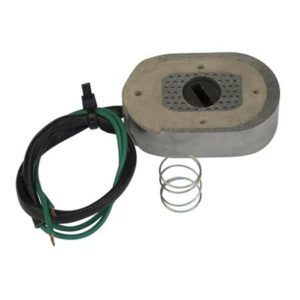
Caravan Electric Braking Solution
Caravan Electric Braking
Caravan electric braking efficiency that deteriorates over time is not unusual.
It sounds radical; however, if we look at the science, the electric brake circuits need attention at every service.
Metal Magnetisation
Place light pressure on the magnet and rub the metal in one direction only. The magnetisation will take some time, so continue rubbing until the iron or steel attracts other pieces of metal. (Source: Science.com)
This information is not new. In fact, if you search Google for “rubbing metal magnet,” you will find many reputable writers reporting on the magnetisation of metals.
Electric Brake Drum Magnetisation
Our testing has found electric drums are not magnetised when an energised magnet engages a drum for several days.
However, a different result is achieved by turning the drum and applying a magnet to its surface.
Owners and service mechanics alike continue to be baffled by poor braking,
I have replaced the shoes and magnets and checked the wire size and all connections. Voltages are 12v, and the current at each magnet is 3.2A.
All perfect; however, braking would return to normal if the drums were replaced.
New Brake Drums
New brake drums remove the polarisation of the old drums.
When the inner drum is first energised, a magnet attaches itself to it. Depending on the connection of the wires, the magnet face may be north or south.
When examining a North Pole connection, the magnet induces a north polarity into the drum face only when the drum is turning.
Remember the statement from science.com?
Place light pressure on the magnet and rub the metal in one direction only.
This action causes the drum face to begin its polarisation journey.
Drum polarisation accelerates during braking (over many journeys), especially in mountainous countries.
How to prove Polarisation
An electric brake magnet draws 3.2 Amps +/- 5%, depending on voltage.
In a perfect caravan or camper electrical system, the voltage is 12v (V), and the Magnet current (I) is 3.2A (per magnet)
Therefore the wattage (P=VI) is 12 x 3.2 = 38.4 watts
The same magnet under no-load or unattached draws 1.6 Amps.
Wattage is determined at the factory and never changes. Wattage is a constant.
The Good Oil
So here is the good oil. Polarised magnets repel against the brake drum.
The level of polarisation determines the amount of repelling.
Image a drum face polarised N and a magnet wired to produce an N polarity.
Science demands these two components repel each other.
When a magnet repels, it will draw less current than full load or less than 3.2A.
 Important Measurement Factors
Important Measurement Factors
- More than 3.2A currents mean you are suffering voltage drop.
- Less than 12v means voltage drop.
- Less than 3.2A means you are suffering polarisation.
If your caravan electrical installation is experiencing a braking problem with 3.2A and 12v per magnet, you do not have any electrical problems.
You have mechanical problems. The problem can generally be traced to heat from bearing failure, heat from misaligned brake shoes, or heat from misaligned weld rings.
For example, if one wheel is hot and the other is not, review both wheels’ brake adjustments.
Where can I buy good Quality Electric Brake Magnets?
- 10-inch Electric Brake Magnet
- Dexter 10-inch Electric Brake Magnet
- 10-inch Off-Road Brake Magnet – Right
- 10-inch Off-Road Brake Magnet – Left
- 12-inch Standard Electric Brake Magnet
- Dexter 12-inch Electric Brake Magnet
- 12-inch Off-Road Electric Brake Magnet – Left
- 12 inch Offroad Electric Brake Magnet – Right
Conclusion
There is a solution to electric drum polarisation.
- Replace the brake drum in severe cases.


0 Comments